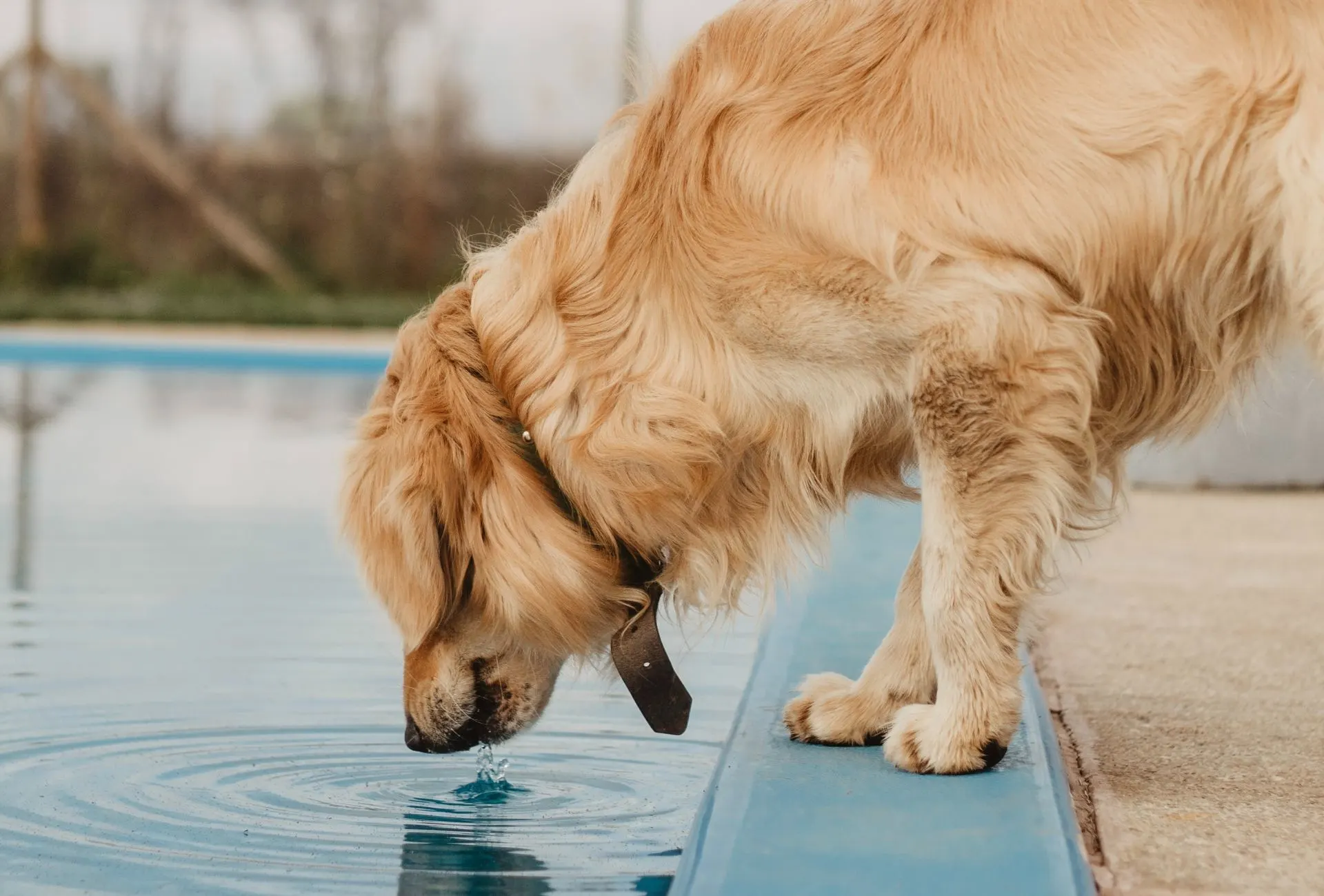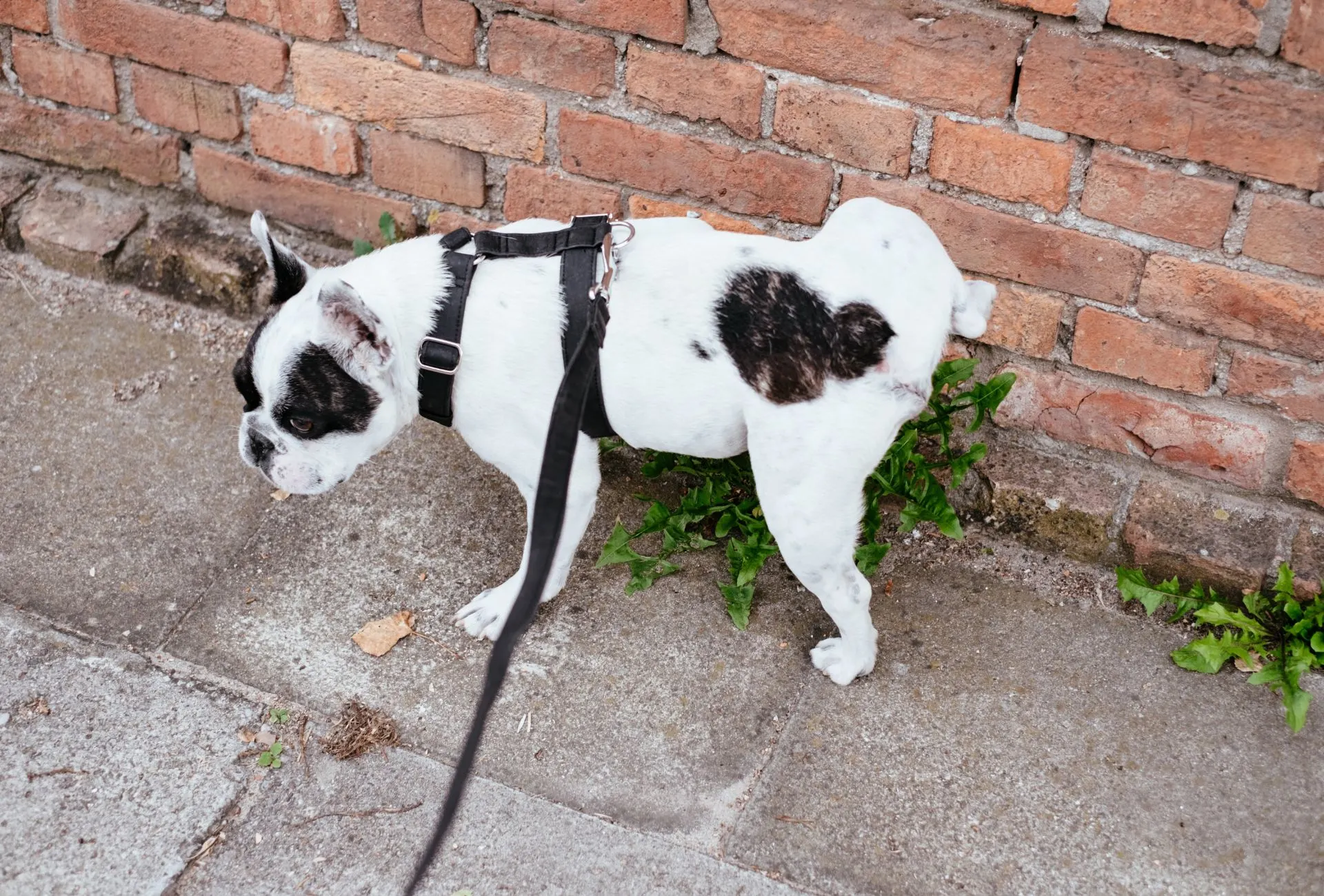Drinking enough water is very important for our dogs but when this consumption becomes excessive, there might be an underlying problem.
Urination and drinking go hand in hand.
This could mean that your dog is urinating excessively (polyuria) and is drinking too much water (polydipsia) in an attempt to replace the lost liquids.
Or he might drink an excessive amount of water which eventually has to be passed.
When the usual potty breaks won’t cut it, you may find your dog urinating inside your house which definitely points to a problem (if he is fully potty trained).
As a general rule, the amount of water a dog needs to drink in a day is equal to 100 ml water for every kg of body weight.
Dr. Jürgen Zentek, head of the Institute for Animal Nutrition at the University of Berlin
An intake way above that can definitely be concerning.
Excessive water intake in dogs and urination inside the home can be caused by kidney disorders, infections, hormone disorders, medications, and cancer.
8 Reasons for Polydipsia and Urinating in the House
Polydipsia and polyuria are only symptoms and can have a variety of underlying causes.
Thirst in dogs is regulated by several mechanisms including the hypothalamus, pituitary gland, adrenal glands, and kidneys.
For example, excessive water loss means the pituitary gland releases an anti-diuretic hormone that tells the kidneys to conserve water and stimulates the thirst center in the brain.
If there is a problem with any of these components or if there are environmental influences, the perception of thirst can be imbalanced.

Pyometra
Pyometra is an infection that can occur in female dogs, commonly two to eight weeks after the last heat.
During this time, the cervix is open and relaxed and bacteria can enter the uterus.
Hormonal changes after the heat can cause a thickening of the uterine lining which creates the perfect environment for bacterial growth.
Pyometra usually presents with a number of symptoms that change depending on whether or not the cervix remains open.
Toxins released by the bacteria can affect the kidneys which leads to increased urination and higher water intake.
If you notice pus or abnormal discharge anywhere (your dog’s bedding, their tail) and/or your dog is feeling listless and lethargic, a vet visit will be necessary.
Kidney Disease
As I have mentioned before, the kidneys play a vital role in your dog’s perception of thirst.
An increase in drinking and urination is actually one of the earliest signs of kidney disease.
The kidney’s main function is to filter waste from the bloodstream and kidney disease describes an inability to do so effectively.
When this happens, the body tries to increase blood flow through the kidneys in an attempt to increase filtration.
This results in the production of more urine which in turn increases water consumption to avoid dehydration.
More advanced kidney failure may cause vomiting, depression, and loss of appetite.
Hypercalcemia
Hypercalcemia is a condition in which the calcium levels in your dog’s blood are too high.
Excess calcium makes it harder for the kidneys to filter out waste.
Similar to kidney disease, this can lead to excessive thirst and frequent urination.
Too much calcium in the blood can also create kidney stones and pain when urinating.
In dogs, as in humans, hypercalcemia is often caused by cancer.
Some other causes of hypercalcemia in dogs include acute and chronic renal failure, primary hyperparathyroidism, hypoadrenocorticism, hypervitaminosis D, bone diseases associated with osteolysis, and granulomatous inflammation.
Determining the cause of hypercalcemia in a dog. Can Vet J. 2006;47(8):819-821.
Poisoning
Various poisons such as alcohol can lead to polydipsia as well as polyuria in dogs.
Usually, this is accompanied by vomiting, diarrhea, and excessive salivation.
If you suspect that your dog has swallowed anything dangerous, call your emergency vet immediately.

Diabetes
Diabetes mellitus refers to a group of diseases that result in high blood glucose.
This can be caused either by insulin resistance or insulin deficiency.
Excess sugar in the blood can exceed your kidney’s capacity leading to too much glucose in the urine.
Glucose is a solute, meaning it drags water into the urine causing your dog to pee more often.
Diabetes usually requires lifelong treatment since it’s not curable and the vast majority of dogs need regular insulin injections.
Dehydration
Dehydration is a symptom in itself and leads to excessive water intake to make up for the loss of fluids.
Dogs can become dehydrated for many reasons including heat stroke, vomiting, fever, kidney disease, and diabetes.
Once the underlying cause has been treated successfully, the dehydration will subside and your dog will go back to his usual water intake.
Medications
Side effects of medications can sometimes cause increased thirst.
This can happen with antiinflammatory drugs, seizure medications, heart failure drugs, etc.
If your dog is taking any prescribed medication, talk to your vet about the possible side effects.
If one medication is causing the symptoms, your vet may be able to lower the dosage or prescribe you a similar one.
Cushing’s Disease
Cushing’s disease is a serious condition in which the adrenal glands overproduce cortisol.
Cortisol regulates stress levels in the body as well as metabolism, blood sugar, and inflammation.
Too much or too little of it results in severe issues.
This disease causes extreme thirst and dogs can drink enormous amounts of water.
More advanced stages come with muscle loss, thinning of the skin, hair loss, and obesity.
Since the symptoms of Cushing’s disease match many other diseases, it requires complex testing and is difficult to diagnose.
The most common cause of Cushing’s disease in both humans and dogs is a tumor in the pituitary glands.
Overdose of prednisone or steroid-containing ear drops can also cause the condition in dogs.
On average, dogs with CD survive for about two years with only 10% living beyond four years.
How to Stop a Dog From Drinking Too Much Water
If your dog is suddenly drinking too much water, there is always a reason for it and finding and treating the cause is the only way to stop it.
Increased thirst means that your dog is losing liquids for any number of reasons.
In this case, you should not limit your dog’s water intake since his body clearly needs it (unless your vet advises you to do so).
If your dog is dehydrated for whatever reason, offer him small amounts of water at a time to prevent vomiting.
The only thing you can do here is to get your dog to the vet to get him examined.
If possible, you can catch a sample of your dog’s first pee in the morning and take it with you to the check-up.
Related Posts
7 Reasons Your Dog Is Not Drinking Water But Eating
My Dog is Lethargic but Eating and Drinking: 14 Reasons
Disclaimer: This blog post does not substitute veterinary attention and does not intend to do so. I am not a veterinarian or pet nutritionist. If your dog shows any sign of illness, call your vet.